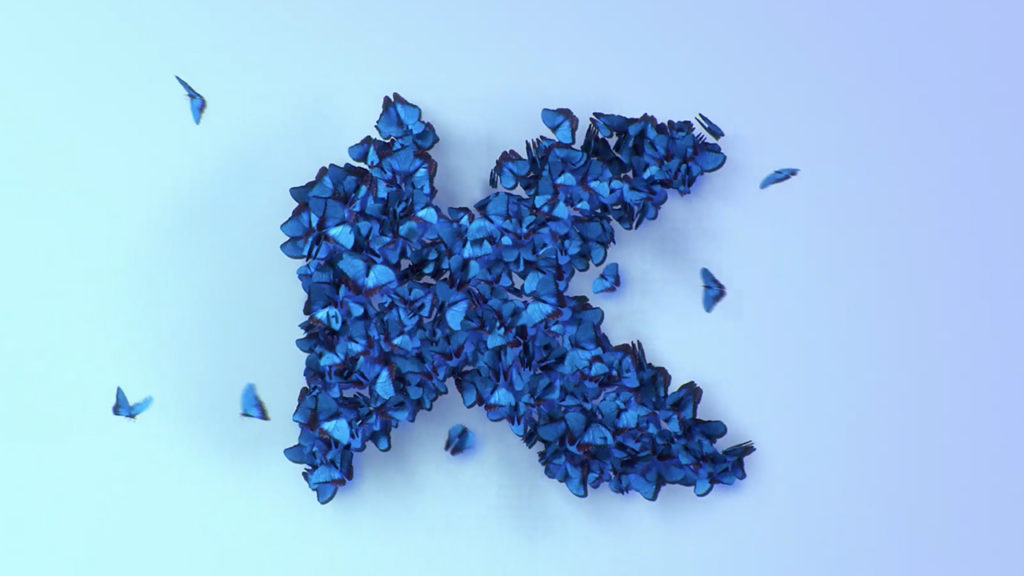After 12 years, three offices, dozens of games and $300 million in yearly revenue, game developer Kabam has decided to rebrand. Out goes the “bomb” image and in comes a bold, ombré orange ‘K’ and a new typeface. The project was incredibly intensive for the company.
For the last two years, Kabam’s team has listened to their users’s feedback to incorporate them into the rebranding process. They didn’t want their players just to love the games but also the changes surrounding the entire brand.
It took a year for Kabam to complete the rebrand and according to the company, it’s more than just an updated label—it’s a visual example of how far they’ve come. It’s blood, sweat and tears.
When Kabam was founded over ten years ago, the Motorola RAZR was alive and well, and the thought of playing a video game with other people on your phone was fiction. Kabam was originally conceived by Kevin Chou, Michael Li and Holly Liu under the name Watercooler, to connect sport and entertainment fans on various social media platforms. In 2009, they launched the game Kingdoms of Camelot on Facebook and transformed into a gaming company.
In 2016, the company was acquired by NetMarble, a South Korean game publishing company. It was a rough transition for Kabam, but the challenges made them who they are today. The new logo is a representation of Kabam’s resurgence.
“We wanted a brand, a logo that would capture that multiplicity of emotions and experiences, as opposed to the static logo that is more in line with the old days of the web,” said Tim Fields, CEO of Kabam. Fields has been making games and software professionally since 1995 and his resume includes Microsoft and Capcom.
“It really took us about a year after that acquisition to get back on our feet and figure out who’s who and [what] the world will look like. That kind of thing is transformative to a company,” Fields added.
The rebranding isn’t just representative of Kabam’s technological advances, business changes, but also indicative of the sense of community at the company.
Instead of contracting out the job, the gaming company put together an in-house team that consisted of multiple disciplines to work on the brand project. They wanted to guarantee representation and input from intersectional views and backgrounds within the company.
At one point, Kabam finished a new logo design but came to the realization they need take a step back, and eventually concluded they need scrap it. The team engaged in healthy debates and worked on communicating with each other to make sure they were on the same page. It was vital everyone was happy with the project.
“I don’t know exactly what the final cost was, but I will tell you that it is insignificant to me compared to what we accomplished which is to make sure that everybody here at the company really loves the way they’re represented now,” said Fields. “I wish you could see everybody here in Vancouver wearing their new shirts.”
The rebranding process took an enormous amount of internal resources. Kabam did commission a video announcing the new logo from an outside vendor. The 1:10-second video appeals to consumers’ emotions while playing games and kicks off with blue butterflies forming the new logo with the words “Embrace zen-like calm,” alongside meditative music. The colors gradually change as the video progresses and it finishes by declaring “Unleash your emotions, experience Kabam.”
“We wanted to celebrate all the different emotions that players experience, while they are playing our games. And we also decided to encourage some of those emotions a little bit more. It’s really representative more of our personality: we are passionate, we are fighting and gaming and adventurous. That’s the whole basis of the rebrand,” said Callie Jenkins, Kabam’s senior director of product marketing.
Kabam’s rebranding turned out to be more than just a new logo, it was an essential process for the company itself.
“We have a very strong culture of gaming; we play our games together. Every single day. My mom would say, ‘Tim, you don’t do anything at work but play games.’ I don’t think that’s entirely true, but I do think that that’s one of the things that allows us to keep a small-company-feel that remains very important to us.”

